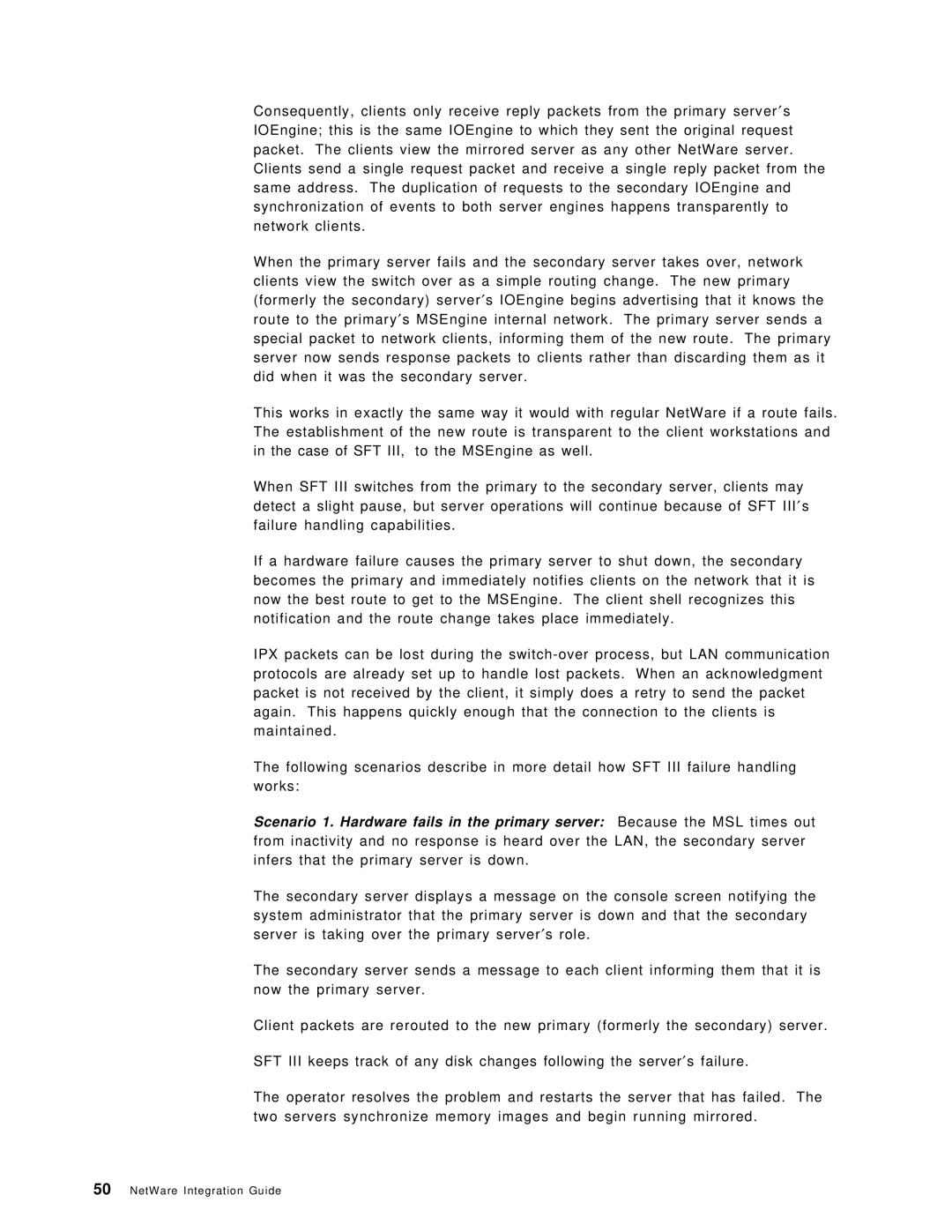Consequently, clients only receive reply packets from the primary server′ s IOEngine; this is the same IOEngine to which they sent the original request packet. The clients view the mirrored server as any other NetWare server.
Clients send a single request packet and receive a single reply packet from the same address. The duplication of requests to the secondary IOEngine and synchronization of events to both server engines happens transparently to network clients.
When the primary server fails and the secondary server takes over, network clients view the switch over as a simple routing change. The new primary (formerly the secondary) server′s IOEngine begins advertising that it knows the route to the primary′s MSEngine internal network. The primary server sends a special packet to network clients, informing them of the new route. The primary server now sends response packets to clients rather than discarding them as it did when it was the secondary server.
This works in exactly the same way it would with regular NetWare if a route fails. The establishment of the new route is transparent to the client workstations and in the case of SFT III, to the MSEngine as well.
When SFT III switches from the primary to the secondary server, clients may detect a slight pause, but server operations will continue because of SFT III′ s failure handling capabilities.
If a hardware failure causes the primary server to shut down, the secondary becomes the primary and immediately notifies clients on the network that it is now the best route to get to the MSEngine. The client shell recognizes this notification and the route change takes place immediately.
IPX packets can be lost during the
The following scenarios describe in more detail how SFT III failure handling works:
Scenario 1. Hardware fails in the primary server: Because the MSL times out from inactivity and no response is heard over the LAN, the secondary server infers that the primary server is down.
The secondary server displays a message on the console screen notifying the system administrator that the primary server is down and that the secondary server is taking over the primary server′s role.
The secondary server sends a message to each client informing them that it is now the primary server.
Client packets are rerouted to the new primary (formerly the secondary) server.
SFT III keeps track of any disk changes following the server′s failure.
The operator resolves the problem and restarts the server that has failed. The two servers synchronize memory images and begin running mirrored.
